Results 6,701 to 6,710 of 12094
Thread: Anandtech News
-
02-04-17, 08:01 AM #6701
Anandtech: Acer Launches Curved XR382CQK Display: 37.5-inch, 3840×1600, FreeSync, & U
Acer has announced its new ultra-wide curved display for gaming and multimedia applications. The monitor boasts with a rare combination of features, such as a curved panel, 2.4:1 aspect ratio, a USB-C input, as well as multiple features for gamers, including a 75 Hz refresh rate, variable refresh via AMD’s FreeSync, and ambient lighting. The new display is about to hit the market, but with a rather high price tag due to its distinctive mixture of capabilities.
The Acer XR382CQK is based on a 37.5” IPS panel with a 3840×1600 resolution, a 24:10 aspect ratio and 2300R curvature (see the table below for other specs). The distinctive specifications may indicate that the supplier of the panel is LG Display, and we already know two monitors which feature the same screen (1, 2). As reported, the resolution and the aspect ratio of the display are well suited for displaying HD and UHD content filmed in an aspect ratio of 2.35:1 or 2.40:1 (a lot of movies are shot in such aspect ratios) as well as for games. Meanwhile the 10-bit (8-bit + FRC) panel enables the monitor to reproduce 1.07 billion of colors and cover 100% of the sRGB color space.
Given the positioning of the monitor, Acer added several features to its XR382CQK that are not available from competitors, including a 75 Hz refresh rate (I suspect the panel is probably overclocked, but not significantly and Acer guarantees that it is going to work fine) as well as RGB ambient lighting that can be adjusted from the OSD (lighting effects include pulse, flash and ripple). In addition, the monitor is equipped with two 7 W speakers with DTS Sound software enhancement.

As for connectivity, the Acer XR382CQK has HDMI, DP, mDP and MHL inputs, a rare combination not found on many other devices. Moreover, the new display is also the first gaming monitor that comes with a USB Type-C input and therefore is compatible with various notebooks that have this interface and can use it to connect to external screens. Technically, DisplayPort alt mode on USB-C supports Adaptive-Sync (and hence FreeSync) and therefore the XR382CQK is the industry’s first monitor that supports FreeSync over USB-C. However, we are not sure there are notebooks with AMD APUs or GPUs that have USB-C as their only display output. In any case, the USB-C input support is a nice feature for the future. In addition, the monitor has a headphone output, which is especially useful for gamers.
The Acer XR382CQK is about to hit the shelves of U.S. retailers with a price tag of $1,299.99. Amazon.com already lists the monitor and is even taking pre-orders, but the product is not in stock just yet.Acer XR382CQK Panel 37.5" IPS Resolution 3840 × 1600 Refresh Rate 75 Hz Variable Refresh Rate FreeSync Response Time 5 ms gray-to-gray Brightness 300 cd/m² Contrast 1000:1 Viewing Angles 178°/178° horizontal/vertical Color Saturation 100% sRGB Pixel Pitch 0.23 mm Pixel Density 110 ppi Anti-Glare Coating Yes Inputs 1 × DisplayPort 1.2
1 × Mini DisplayPort 1.2
1 × HDMI 2.0
1 × MHL 1.2
1 × USB 3.0 Type-CUSB Hub 4 port USB 3.0 hub: four USB-A Audio 7 W × 2 Launch Price $1299.99
Buy Acer XR382CQK on Amazon.com
Gallery: Acer Launches Curved XR382CQK Display: 37.5”, 3840×1600, FreeSync and USB-C




Related Reading:
- ASUS Announces Designo Curve MX38VQ: 37.5 Inch Curved Display with Qi Charging
- LG 38UC99 Announced: 37.5-Inch Curved 21:9 Display with 3840×1600 Resolution
- AOC Announces the AGON AG352UCG 21:9 Curved Display: 35", 3440×1440, 100Hz with G-Sync
- Acer Introduces A Pair Of Predator Gaming Displays
- Acer Announces The Acer Predator 21 X: 21-Inch Curved Screen Gaming Notebook
More...
-
02-04-17, 10:19 AM #6702
Anandtech: AMD Files Patent Infringement Complaint Against LG, MediaTek, Sigma Design
Late last month, AMD filed a legal complaint against a number of companies accusing them of infringing its patents covering graphics processing technologies. The company requested the United States International Trade Commission (US ITC) to investigate the matter and, if the ITC finds in their favor, ban products based on chips that infringe on AMD’s intellectual property rights.
In its complaint, AMD asserts that products by LG, MediaTek, Sigma Designs and Vizio infringe three patents, two of which were originally filed by ATI Technologies (which AMD acquired in 2006) in early 2000s and one filed by AMD itself. The patents in question cover fundamental aspects of contemporary graphics processing, such unified shaders (‘133), parallel pipeline graphics system (‘506), as well as a graphics processing architecture employing unified shaders (‘454). In addition, the lawsuit mentions an in-progress patent application covering GPU architectures with unified shaders (‘967) that is also claimed to be infringed by two of the defendants.
Notably, all the defendants license their GPU technologies from third party developers such as ARM and Imagination. As case law involving IP infringement is generally weak - it's more difficult to sue over ideas as opposed to physical products - AMD is going after product manufacturers instead. As a result, instead of accusing IP vendor ARM of using its intellectual property, AMD is taking a legal action against MediaTek, LG, Sigma and Vizio, all of whom either make chips that AMD believes use their IP, or use said chips as part of finished consumer goods.
Overall the case draws some immediate parallels with a case filled by NVIDIA in the latter part of 2014, where the company filed complaints with the US ITC over accused patent infringement by Qualcomm and Samsung. Like AMD’s case, the core issue was over GPU patents that NVIDIA believed the companies’ products were violating. A side issue in the case that NVIDIA was also trying to get addressed was to figure out who is responsible for patent infringement in devices like smartphones: the handset manufacturer, or the SoC manufacturer. It was a case that NVIDIA essentially lost; the companies settled, but only after Samsung’s counter-suit was more successful in court than NVIDIA’s original suit. That the case was settled out of court also means that there is no significant legal precedent to come out of the case.
As for the AMD case, diving deeper into matters, one of the allegedly infringing products is MediaTek’s Helio P10 SoC for smartphones, which is used by certain handsets from LG (e.g., LG X Power). The chip features the Mali T860MP2 GPU licensed from ARM and is not developed by MediaTek itself. Another SoC that allegedly infringes AMD’s patents is Sigma’s SX7 (STV7701) SoC for UHD TVs with HDR support. Details on this SoC are harder to come by, but at a high level this chip appears to use an ARM-developed quad-cluster GPU. Downstream, Vizio uses the SX7 SoC for its advanced televisions, which is why they are one of the defendants in the complaint.
Importantly, AMD's complaint also states that the infringement is not limited to the named products, but rather that AMD is naming them as examples of infringement. The case could ultimately go beyond the two SoCs, one smartphone, and several TVs (including LG’s 49UH6500 and Vizio's E43U-D2) named, depending on which side any rulings favor.
AMD claims that the aforementioned SoCs and products not only infringe on its intellectual property, but that those products also damage legitimate licensees of AMD's IP. To support the claim, AMD made one interesting disclosure: Samsung and GlobalFoundries have licensed its intellectual property covered by the ‘506, ‘454 and ‘133 patents, as well as the ‘967 application. The former has rights to use the IP in its Exynos mobile SoCs (up to 10-nm Exynos 8 Octa 8895 that uses an ARM Mali GPU), whereas the latter has rights to manufacture the appropriate chips.
In fact, one big unknown right now is just which GPU architectures AMD believes to infringe on their IP. The two named SoCs are ARM Mali based, and given the patents involved (e.g. unified shaders) it looks like AMD takes issue with ARM’s Midgard architecture in particular. Midgard itself is a few years old now, and while it will be shipping in products for years to come, it’s interesting to note that ARM has already released designs based around their new Bifrost architecture, which is radically different from Midgard. That being said, Midgard architecture-based SoCs are fairly numerous, and so there must be other exact reasons as to why these companies are specifically infringing on these patents beyond the simple use of Midgard.The List of AMD's Patents Allegedly Infringed by Defendants Patent Name Abstract Description Asserted Claims Filing Date Infringing
IC Products*7,633,506 Parallel pipeline graphics system The parallel pipeline graphics system includes a back-end configured to receive primitives and combinations of primitives (i.e., geometry) and process the geometry to produce values to place in a frame buffer for rendering on screen. 1-9 November 26, 2003 MediaTek Helio P10
SDI SX77,796,133 Unified shader A unified shader unit used in texture processing in graphics processing device. Unlike the conventional method of using one shader for texture coordinate shading and another for color shading, the present shader performs both operations. 1-13 and 40 December 8, 2003 8,760,454 Graphics processing architecture employing a unified shader A GPU that uses unified shaders 2 - 11 May 17, 2011 MediaTek Helio P10 Patent Application 14/614,967 1-8 June 27, 2016 *The list of infringing products is not limited to two ICs.
Meanwhile not named in any of the complaints are chips using any generation of Imagination’s PowerVR architectures. As MediaTek is known to use both ARM and Imagination GPU designs – and because AMD is only listing a couple of chips as examples – it’s not clear in AMD’s complaint whether they consider PowerVR to be infringing. However an important clue lies in the fact that in listing the SoCs Samsung is licensed to make, only SoCs using ARM GPUs are mentioned. As a result, our best guess is that this complaint is solely about ARM’s GPU IP.
Looking at the broader picture and possible motivations for why AMD would bring this complaint up now, AMD announced plans to monetize its IP portfolio in late 2014 in a bid to secure new revenue streams and improve overall profitability. As part of the effort, the company inked a deal with Tianjin Haiguang Advanced Technology Investment Co., Ltd (THATIC), who is an investment arm of the Chinese Academy of Sciences, regarding the development of server SoCs last year. Apparently, in addition to finding partners like THATIC, AMD has approached certain technology companies that ship products based on technologies developed by third parties (e.g., ARM) in regards to patent licensing. AMD says that it has already “enforced” its “intellectual property rights” against Samsung and LG and the new family of lawsuits against the latter is a continuation of these efforts.
The AMD complaint requests the US ITC to issue a limited exclusion order and a cease and desist order to stop the infringing products from being imported and sold in the U.S. If the commission finds that the defendants do infringe on AMD’s patents and decides to ban them from the U.S., multiple product lines of LG and Vizio would be affected.
AMD is not a company that goes to court often and it is not a company that brings its litigations to the public attention, which is part of the reason this is only coming to light now. Back in 2005, the chip designer sued Intel alleging the latter of multiple wrongdoings that harmed AMD’s business in the 1990s and the early 2000s, but that was the only public legal process that AMD was involved into in the recent years. By contrast, the legal proceedings against Samsung and LG in the recent years went unnoticed. This also significantly contrasts with NVIDIA, which was quite vocal and public about their 2014 suit against Qualcomm and Samsung.
The litigation against MediaTek, LG, Sigma Designs, and Vizio will not attract as much attention as the AMD vs. Intel fight, but it certainly marks a rare situation when AMD goes to court on the offensive. In the meantime this will be a case worth watching. As AMD already has a license agreement with a major SoC manufacturer (Samsung) in place, it means they aren't facing an entirely uphill battle. Still, barring an early out of court settlement, it may take years for this case to be fully resolved.
Related Reading:
- China Calling: AMD Forms Joint Venture for x86 Server SoCs in China
- NVIDIA Files Patent Infringement Complaints Against Qualcomm & Samsung
- Samsung Files Counter-Suit & Patent Infringement Claims Against NVIDIA & Velocity Micro
- Samsung/NVIDIA Case Update: US ITC Finds Samsung GPUs Non-Infringing
- US ITC Finds NVIDIA Guilty of Infringing Three Samsung Patents
- NVIDIA & Samsung Settle All Patent Infringement Disputes
Sources: ITC Law Blog, TechPowerUp.
More...
-
02-04-17, 01:15 PM #6703
Anandtech: Palit Launches GeForce GTX 1070 for Mini-ITX PCs with GALAX and KFA2 Brand
Palit has quietly released a GeForce GTX 1070-based video card for Mini-ITX systems under the GALAX and KFA2 brands. The product uses a unique PCB design and will be the third GeForce GTX 1070 graphics adapter for Mini-ITX PCs on the market.
Just like competing GeForce GTX 1070s in an ITX form-factor, the GALAX GeForce GTX 1070 OC Mini and KFA2 GeForce GTX 1070 OC Mini graphics cards offer the same level of performance as a full-size GTX 1070. Both boards carry NVIDIA’s GP104 GPU (with 1920 stream processors, 120 texture units and 64 ROPs) that operates at 1518/1708 MHz (base/boost) as well as 8 GB of Micron’s GDDR5 memory running at 8 Gbps. While the card runs a bit faster than NVIDIA’s reference frequencies (+12/25 MHz for base/boost frequencies), its TDP remains the same at around 150W.
Both video cards use the same PCB design with a 4+1 VRM and one 8-pin PCIe power connector, which is inline what NVIDIA’s reference boards offer. The VRM uses solid-state chokes, whereas its MOSFETs are cooled down by a separate heatsink. The main cooling system features a copper base, three thick nickel-plated heat pipes, a relatively large aluminum radiator, two fans and a metal cover. In fact, the cooler is larger when compared to cooling systems of some other Mini-ITX graphics cards and the adapter itself is a bit longer when compared to direct rivals (195/181 mm with/without a bracket, whereas a mini-ITX motherboard is 170mm).
The dimensions of the GALAX/KFA2 GeForce GTX OC Mini cards are not going to become a problem in the vast majority of situations where a good performance mini-ITX gaming PC is concerned, however some users aiming at very small form-factor builds may end up finding it a tight squeeze.
As for connectivity, Palit decided to offer something different from NVIDIA’s reference designs and appeal to owners of older monitors (who use more than one of them) with DVI interface. Both cards are equipped with one DisplayPort 1.4 connector, an HDMI 2.0b port as well as two dual-link DVI-D ports. By contrast, NVIDIA-designed boards come with two DPs, an HDMI and only one DVI header.
Palit did not announce MSRP and ETA of its GALAX GeForce GTX 1070 OC Mini and KFA2 GeForce GTX 1070 OC Mini boards, but given that they are listed at respective web sites, expect them to show up on the shelves in the coming weeks. Meanwhile, as examples of other high-end Mini-ITX graphics cards show, the GPU manufacturers do not tend to charge a much more for an SFF card and prices of such adapters are very close to NVIDIA’s MSRPs (which for the GTX 1070 is $379).Specifications of GeForce GTX 1070 for Mini-ITX PCs GALAX GeForce GTX 1070 OC Mini KFA2 GeForce GTX 1070 OC Mini ZOTAC GeForce GTX 1070 Mini GIGABYTE GeForce GTX 1070 Mini-ITXNVIDIA
GeForce GTX 1070
Founders EditionStream Processors 1920 Texture Units 120 ROPs 64 Core Clock (MHz) 1518 1531 - 1556 1506 Boost Clock (MHz) 1708 1721 - 1746 1683 Memory Capacity 8 GB Type GDDR5 Clock 8 Gbps TDP 150 W Length 195 mm 210 mm 169 mm 280 mm Launch Date Q1-2017 12/2016 7/2016 6/2016 Launch Price unknown $395 unknown $449
Gallery: GALAX GeForce GTX 1070 OC Mini





Related Reading:
- ZOTAC Announces GeForce GTX 1080 for Mini-ITX PCs
- ZOTAC Launches GeForce GTX 1070 Mini for Mini-ITX PCs
- GIGABYTE Announces GeForce GTX 1070 Mini ITX OC
Sources: GALAX, KFA2.
More...
-
02-05-17, 05:08 PM #6704
Anandtech: NVIDIA Announces Quadro GP100 - Big Pascal Comes to Workstations
Kicking off on this Sunday afternoon is CAD & CAE software developer Dassault Systèmes’ annual trade show, the aptly named SOLIDWORKS World. One of the major yearly gatherings for workstation hardware and software vendors, it’s often used as a backdrop for announcing new products. And this year NVIDIA is doing just that with a literal Big Pascal product launch for workstations.
The last time we checked in on NVIDIA’s Quadro workstation video card group, they had just launched the Quadro P6000. Based on a fully enabled version of NVIDIA’s GP102 GPU, the P6000 was the first high-end Quadro card to be released based on the Pascal generation. This is a notable distinction, as NVIDIA’s GPU production strategy has changed since the days of Kepler and Maxwell. No longer does NVIDIA’s biggest GPU pull triple-duty across consumer, workstations, and servers. Instead the server (and broader compute market) is large enough to justify going all-in on a compute-centric GPU. This resulted in Big Pascal coming to life as the unique GP100, while NVIDIA’s graphical workhorse was the smaller and more conventional (but still very powerful) GP102.
Because of this split in NVIDIA GPU designs, it wasn’t clear where this new compute-centric GPU would fit in across NVIDIA’s product lines. It’s the backbone of Tesla server cards, of course, and meanwhile it’s very unlikely to show up in consumer GeForce products. But what about the Quadro market, which in previous generations has catered to both graphics and compute users at the high-end (if only because of the mixed-use nature of previous generation GPUs)? The answer, as it turns out, is that Big Pascal has a place in the Quadro family after all. And that’s an interesting place at the top that NVIDIA calls the Quadro GP100.
Based on NVIDIA’s GP100 GPU, Quadro GP100 defies a simple explanation due in large part to GP100’s unique place in NVIDIA’s Pascal GPU family. Quadro GP100 on one hand a return to form for NVIDIA’s Quadro lineup. It’s the jack of all trades card that does everything – graphics and compute – including features that the Tesla cards don’t offer, a job previously fulfilled by cards like the Quadro K6000. On the other hand, it’s not necessarily NVIDIA’s most powerful workstation card: on paper its FP32/graphics performance is lower than Quadro P6000’s. So where does Quadro GP100 fit in to the big picture?
The long and short of it is that the Quadro GP100 is meant to be a Tesla/GP100 card for workstations, but with even more functionality. While NVIDIA offers PCIe Tesla P100 cards, those cards only feature passive cooling and are designed for servers; the lack of active cooling means you can’t put them in (conventional) workstations. The Quadro GP100 on the other hand is a traditional, fan & shroud active cooled card, like the rest of the Quadro lineup. And then NVIDIA doesn’t stop there, enabling graphics functionality that isn’t on the Tesla cards. The fact that NVIDIA isn’t even giving it a P-series name – rather naming it after the GPU underneath – is a good hint of where NVIDIA is going.
The Quadro GP100 then is being pitched at an interesting mix of users. For compute users who need a workstation-suitable GP100 card, then the Quadro GP100 is meant to be their card. It offers all of GP100’s core functionality, including ECC memory, half-speed FP64, and double-speed (packed) FP16 instructions. As an added kicker, the Quadro GP100 introduces a new NVLink connector for PCIe cards. This allows for a pair of Quadro cards to be linked up in a 2-way NVLink configuration, bringing with it NVLInk’s memory access and low latency data transfer benefits to PCIe cards. Notably, this isn’t available on the Tesla PCIe cards.NVIDIA Quadro Specification Comparison GP100 P6000 M6000 K6000 CUDA Cores 3584 3840 3072 2880 Texture Units 224 240 192 240 ROPs 128? 96 96 48 Boost Clock >1395MHz ~1560MHz ~1140MHz N/A Memory Clock 1.4 Gbps HBM2? 9Gbps GDDR5X 6.6Gbps GDDR5 6Gbps GDDR5 Memory Bus Width 4096-bit 384-bit 384-bit 384-bit VRAM 16GB 24GB 24GB 12GB ECC Yes No No Yes FP64 1/2 FP32 1/32 FP32 1/32 FP32 1/3 FP32 TDP 235W 250W 250W 225W GPU GP100 GP102 GM200 GK110 Architecture Pascal Pascal Maxwell 2 Kepler Manufacturing Process TSMC 16nm TSMC 16nm TSMC 28nm TSMC 28nm Launch Date March 2017 October 2016 03/22/2016 07/23/2013
As NVIDIA discusses it, they sound rather confident that Quadro GP100 will sell well to compute users, and for good reason. The Tesla P100 cards have been a hit with neural network programmers, and now researchers have a card suitable for dropping into a workstation to develop against.
Meanwhile the second market for the Quadro GP100 is the traditional high-end CAD/CAE market. For those more specialized users who need a workstation card with fast FP64 performance and ECC memory for maximum accuracy and reliability, the Quadro GP100 is the first Quadro card since the K6000 to offer that functionality. Arguably this is a bit of a niche, since most CAD users don’t need that kind of reliability, but for those who do for complex engineering simulations and the like, it’s critical (not to mention a lucrative market for NVIDIA). Serving this market also makes the Quadro GP100 unique in that it’s the only GP100 card with its graphical functionality turned on.
However when it comes to those graphical workloads, this is where the line between the Quadro GP100 and P6000 gets a lot murkier. The Quadro P6000 is rated for 12 TFLOPS FP32, versus GP100’s “>10 TFLOPS”, and similarly the Quadro GP100 features around 83% of the texture throughput as well. Paper specs aren’t everything, of course, but in pure SM throughput-bound scenarios the P6000 should be the faster card. This being the advantage of the more compact (and manufacturable) GP102 versus the massive GP100.
The one wildcard here is the HBM2 memory interface and associated ROPs. NVIDIA is specifically touting the Quadro GP100 as offering their fastest rendering performance, and depending on the scenario that can very well be the case. NVIDIA hasn’t disclosed the official memory frequency of the Quadro P100, but if it’s like its Tesla counterparts, then we’re looking at 720GB/sec, versus Quadro P6000’s mere 432GB/sec. Coupled with what’s almost certainly a ROP count advantage – NVIDIA still hasn’t disclosed GP100’s ROP count, but based on what we know of GP102, 128 ROPs is a safe bet – and Quadro GP100’s pure pixel pushing power should be greater than even P6000 by around 20%. Given that CAD/CAE can be very pixel-bound, and this should be a tangible benefit for some Quadro customers.
The one drawback though is memory capacity. While the Quadro P6000 offers 24GB of VRAM due to the greater practical capacity of GDDR5X, like all GP100 products the Quadro GP100 tops out at 16GB of HBM2. This means that for very large dataset users, a single Quadro GP100 is a good deal smaller than what they can get out of the P6000. It’s worth noting that NVIDIA is touting NVLink as helping out with memory crunch issues, however I suspect that’s rooted in compute more than graphics.
Moving on then, outside of the GPU underneath, the Quadro GP100 packs the typical Quadro family hardware features. This includes 4 DisplayPort 1.4 ports and a single DVI port for display outputs, and NVIDIA is classifying it as VR Ready as well. Meanwhile towards the rear of the card are the Quadro Sync and Stereo connectors for synchronized refresh and quad-buffered stereo respectively.
Wrapping things up, like the rest of the Quadro cards being launched today, NVIDIA is expecting the Quadro GP100 to ship in March. Pricing has yet to be determined, but as the Quadro GP100 is the jack-of-all-trades GP100 card, I'm told that pricing will be a bit slightly above the Quadro P6000.
More...
-
02-05-17, 05:08 PM #6705
Anandtech: NVIDIA Announces Quadro P4000, P2000, P1000, P600, & P400 - Finishing the
Alongside today’s big announcement of the GP100-powered Quadro GP100, NVIDIA is also announcing a sizable refresh to the rest of the Quadro family today at SOLIDWORKS World. Along with the Quadro GP100, altogether NVIDIA is announcing six new Quadro Pascal cards today, joining the two existing Pascal cards and finishing the rest of the Quadro family Pascal refresh.
As we’ve already covered the Pascal Quadro family feature set in some detail with the Quadro P6000 launch, I won’t go over it in great depth here. But at a high level Pascal and the cards based on it bring with them a few core improvements over previous generation Maxwell and Kepler cards. This includes much greater performance thanks to the smaller 16nm manufacturing process and resulting wider GPUs, single-port support for 5K@60Hz monitors thanks to DisplayPort 1.4, and Simultaneous Multi-Projection (SMP) for VR.
Moving on to the products then, the five cards covered here are being launched to replace their Maxwell M-series cards in the same segments. Over the years NVIDIA has worked out a distinct price/feature/TDP structure to their Quadro lineup, with this latest generation of cards meant to slot right into that.
At the mid-range of the market are the Quadro P4000 and P2000. As the more powerful of the two, the Quadro P4000 is based on a cut-down GP104 GPU, the same GPU used in the Quadro P5000. However unlike the P5000, the P4000 has been cut down to size as a single-slot card. With respect to performance on paper it should deliver right around 2x the performance of the M4000, and it can do so with a TDP of 105W, 15W lower than its predecessor. It is also the lower-tier card that NVIDIA still classifies as VR ready; below the P4000 they don’t recommend their cards for VR development.NVIDIA Quadro Specification Comparison (4000/2000) Quadro P4000 Quadro P2000 Quadro M4000 Quadro M2000 CUDA Cores 1792 1024 1664 768 Boost Clock ~1480MHz ~1470MHz 800MHz 1180MHz FP32 TFLOPS 5.3 TFLOPS 3.0 TFLOPS 2.66 TFLOPS 1.81 TFLOPS Memory Bus Width 256-bit 160-bit 256-bit 128-bit VRAM 8GB 5GB 8GB 4GB FP64 1/32 1/32 1/32 1/32 TDP 105W 75W 120W 75W GPU GP104 GP106 GM204 GM206 Architecture Pascal Pascal Maxwell 2 Maxwell 2 Size Single-Slot Single-Slot Single-Slot Single-Slot DisplayPort Outputs 4 4 4 4
Meanwhile replacing the Quadro M2000 is the Quadro P2000. This card is in the same single-slot form factor as the P4000, but it drops down in power and performance, being built off of a GP106 GPU. Performance should be around 66% percent faster than its predecessor with the same 75W TDP. Surprisingly, NVIDIA didn’t opt to go with a fully-enabled 192-bit memory bus on this card; instead only 5 channels (160-bits) are enabled, which is also why it offers the more unusual memory capacity of 5GB.
Finally, both cards come with 4 full-size DisplayPort 1.4 connectors.
Still farther down the refreshed Quadro lineup we have NVIDIA’s low-profile cards, which cover the rest of the mid-range market and the entry-level market. All based around the GP107 GPU, these cards also serve to reintegrate the Quadro lineup into a single family; the cards these new Quadro products replace were sold as part of the Quadro K-series, and featured a mix of Kepler and Maxwell 1 GPUs.NVIDIA Quadro Specification Comparison (1xxx) Quadro P1000 Quadro K1200 CUDA Cores 640 512 Boost Clock ~1400MHz 954MHz FP32 TFLOPS 1.8 TFLOPS 0.98 TFLOPS Memory Bus Width 128-bit 128-bit VRAM 4GB 4GB TDP 47W 45W GPU GP107 GM107 Architecture Pascal Maxwell 2 Size Low Profile Low Profile DisplayPort Outputs 4 4
Starting things off here we have the Quadro P1000. Replacing the GM107-based K1200, the P1000 is the most powerful of the low-profile Quadros. It uses a cut-down GP107 GPU clocked at around 1.4GHz. Overall performance on paper should be around 84% faster than the outgoing K1200, while TDP has drifted up just slightly from 45W to 47W. Meanwhile due to its size, NVIDIA has shifted to mini-DisplayPort connectors here. Interestingly, I’m told that these are latching ports, which isn’t standard for mini-DisplayPort but offers a more robust connection as a result.
Rounding out the rest of the pack is the Quadro P600 and P400. The Quadro P600 is essentially a lower-performance version of the P1000. It drops down to 1.1 TFLOPS – around 45% faster than its predecessor – and retains the 4 mini-DisplayPort connectors. TDP on this part is 40W, down from 45W for the Quadro K620. Also of note here, the low-end Quadros are finally getting an upgrade to GDDR5, versus DDR3 that was found on their K-series counterparts.NVIDIA Quadro Specification Comparison (6xx/4xx) Quadro P600 Quadro P400 Quadro K620 Quadro K420 CUDA Cores 384 256 384 192 Boost Clock ~1430MHz ~1170MHz 1000MHz 780MHz FP32 TFLOPS 1.1 TFLOPS 0.6 TFLOPS 0.76 TFLOPS 0.3 TFLOPS Memory Bus Width 128-bit? 128-bit? 128-bit 128-bit VRAM 2GB 2GB 2GB 1GB TDP 40W 30W 45W 41W GPU GP107 GP107 GM107 GK107 Architecture Pascal Pascal Maxwell 1 Kepler Size Low-Profile Low-Profile Low-Profile Low-Profile DisplayPort Outputs 4x Mini 3x Mini 1x (+1 DVI) 1x (+1 DVI)
Finally, bringing up the rear is the Quadro P400. This replaces the K420, which was the last Kepler-based part in the Quadro lineup. Performance here should more than double, considering both the vast improvement in architecture and clockspeeds. Meanwhile the P400’s TDP is 30W, versus 41W for the K420. Note that relative to the P600, the P400 loses a mini-DisplayPort; though this is still up from the 2 total ports on the K420.
Wrapping things up, as with the Quadro GP100, the rest of these new Quadro cards will start to arrive in March. NVIDIA hasn’t published formal prices for these cards, but we’re told that prices should be similar to the last-generation Quadro cards that they replace.
More...
-
02-06-17, 08:56 AM #6706
Anandtech: The MSI X99A Gaming Pro Carbon Motherboard Review
Something was clear during 2016: RGB LED is here and it wants to be everywhere. It seems that a multicolored piece of computer hardware is the new thing, and every vendor wants to show it off. Usually the LED comes with a colored product anyway, so there are multiple angles for aesthetics, but some motherboard manufacturers have decided that sometimes a cleaner look is needed. MSI’s Carbon series is meant to be this – clean, black, and carbon fiber accented. With today’s review, we’re looking at the MSI X99A Gaming Pro Carbon which follows this understated classical elegance, but then straps RGB LEDs on the top anyway.
More...
-
02-07-17, 07:21 AM #6707
Anandtech: ASRock Beebox-S 7200U Kaby Lake UCFF PC Review
The Kaby Lake-U (KBL-U) series with 15W TDP CPUs was introduced along with the 4.5W Kaby Lake-Y ones in Q3 2016. The first set of products with Kaby Lake-U were ultrabooks. However, ultra-compact form-factor (UCFF) PCs were not long behind. There are already three vendors in the market with Kaby Lake UCFF PCs - ASRock (Beebox-S), GIGABYTE (BRIX), and MSI (Cubi 2). We have already reviewed the MSI Cubi 2 - a no-frills Kaby Lake 'NUC' The ASRock Beebox-S differentiates itself by including a USB 3.1 Gen 2 bridge, as well as a LSPCon (for HDMI 2.0 / HDCP 2.2 support) on the motherboard. This review takes a look at how the ASRock Beebox-S 7200U fares in typical UCFF PC workloads.
More...
-
02-07-17, 05:23 PM #6708
Anandtech: Palit Announces KalmX: A Passively-Cooled GeForce GTX 1050 Ti Graphics Car
Palit has quietly launched a passively-cooled graphics card based on NVIDIA’s GeForce GTX 1050 Ti GPU. The sizeable board uses a large aluminum heatsink with heat pipes and requires substantial height clearance in a case. Meanwhile, its indisputable trump card is a lack of any noise.
Producers of graphics cards nowadays tend to differentiate from each other by using different cooling systems and increasing performance of their products by boosting GPU frequencies beyond the recommendations of GPU developers. Modern high-end graphics cards use coolers with two or even three fans with a low rotation speed to reduce noise levels, but it is hard to find a passively-cooled graphics board that produces no noise at all. Palit decided to go head first into this and developed a video card with a passive cooler featuring a contemporary GPU powered by NVIDIA’s Pascal architecture under the brand KalmX.
The Palit GeForce GTX 1050 Ti KalmX uses a unique PCB design and has a dual-slot aluminum heatsink that features two heat pipes. The card runs at reference frequencies (1290/1392 MHz base/boost for the GP107 GPU) and is equipped with 4 GB of GDDR5 memory operating at 7000 MT/s. The board does not require any additional power connectors as it consumes no more than 75 W, but its cooler is large and may not fit into some compact computers. As for connectivity, the board features an HDMI 2.0b output, a DisplayPort 1.4 as well as a dual-link DVI-D header.
Palit did not announce MSRP of the GeForce GTX 1050 Ti KalmX and it is unclear whether the producer plans to charge a premium versus NVIDIA’s MSPR for the GTX 1050 Ti ($139) for passive cooling. At press time, one of Amazon’s partners was selling Palit’s passively-cooled GeForce GTX 750 Ti KalmxX Silent 2 GB for $238, but such overprice is not common. If we get updated pricing, we'll update this news.
Gallery: Palit Announces Passively-Cooled GeForce GTX 1050 Ti Graphics Card





Related Reading:
- GALAX Launches Low Profile GeForce GTX 1050 OC and 1050 Ti OC
- GIGABYTE Quietly Launches Low Profile GeForce GTX 1050, 1050 Ti Graphics Cards
- MSI Adds Low-Profile GeForce GTX 1050 Ti to Lineup
More...
-
02-07-17, 09:13 PM #6709
Anandtech: Western Digital Announces SanDisk Skyhawk Enterprise NVMe SSDs
Today Western Digital announced the first enterprise NVMe SSDs under their SanDisk brand. The new SanDisk Skyhawk series are 2.5" U.2 SSDs intended for datacenter use. While Western Digital's HGST division already has NVMe SSDs like the Ultrastar SN200 series and their consumer-oriented WD brand recently added the WD Black M.2 NVMe SSD, SanDisk's previous PCIe SSDs have been based on their proprietary Fusion-IO architecture.
The SanDisk Skyhawk series includes 2TB and 4TB class drives. The standard Skyhawk models have usable capacities of 1920GB and 3840GB, while the Skyhawk Ultra models reserve more spare area and offer usable capacities of 1600GB and 3200GB. All four SKUs are based on a common platform with an unspecified PCIe 3.0 NVMe 1.2 controller. Performance and power consumption ratings are substantially lower than the HGST Ultrastar SN200 series, which use Microsemi's Flashtec controllers and draw up to 25 W compared to just 10.5 W average and 12 W maximum for the Skyhawk. The SanDisk Skyhawk SSDs do not support the U.2 dual-port mode that top of the line enterprise SSDs like the HGST Ultrastar SN200 and Intel SSD DC D3600 and D3700 are capable of using, but otherwise the SanDisk Skyhawk has the usual features expected of a datacenter SSD.
Pricing for the SanDisk Skyhawk SSDs has not been announced. The drives are currently sampling to select OEMs and will be generally available in Q2.Series Specifications Skyhawk Skyhawk Ultra Capacities 1,920 GB 3,840 GB 1,600 GB 3,200 GB Form Factor 2.5"/15mm U.2 Interface PCIe 3.0 x4 (NVMe 1.2) Controller unspecified NAND 15nm MLC Sequential Read (128 kB QD128) up to 1500 MB/s up to 1700 MB/s Sequential Write (128 kB QD128) up to 1170 MB/s up to 1200 MB/s Random Read (4 kB QD128) IOPS up to 250k IOPS up to 250k IOPS Random Write (4 kB QD128) IOPS up to 47k IOPS up to 83k IOPS Mixed Random Read/Write
( 70%R/30%W, 4kB QD128)up to 99k IOPS up to 150k IOPS Average Random Read Latency (4kB QD32) 128 µs 127 µs 125 µs 126 µs Average Random Write Latency (4kB QD32) 718 µs 1331 µs 351 µs 693 µs Power Idle 5.6 W Operating 10.5 W Endurance 0.6 DWPD 0.5 DWPD 1.7 DWPD 1.2 DWPD Encryption None Power Loss Protection Full in-flight data protection MTBF 2 million hours Warranty 5 years
More...
-
02-07-17, 10:03 PM #6710
Anandtech: CORSAIR ONE PC Announced
Corsair is very well known and well regarded for their ever-expanding line of PC cases, components and peripherals. After recently branching out to barebones PC kits with their Bulldog line, Corsair is now making the leap to fully-assembled systems.
The Corsair ONE is their first ready-to-run PC, a compact tower system with familiar design traits of angular shapes and a dark brushed aluminum finish. Aesthetically, the front of the Corsair ONE most closely resembles their Carbide 330R and Obsidian 550D cases, but overall the Corsair ONE's design is not as minimalist. The top and bottom have a finned structure reminiscent of a large heatsink, and the side panels are perforated with triangular ventilation holes. Corsair is not sharing technical specifications yet, but the accent lighting betrays a clear gaming focus. The tower is too shallow to contain a full ATX motherboard, but given the thoroughly ventilated side panels it should have no trouble accommodating high-power desktop components. Their PR photos also show that the Corsair ONE has an HDMI port on the front in addition to USB, allowing for easy use of a VR headset. There is no evidence of an optical drive bay.
While engineering a complete PC system should be no trouble for a company that already provides so many key components, the Corsair ONE will require a big shift in sales and support strategy for Corsair: The target audience will mostly be consumers who aren't interested in the hassle of assembling a system based on the Bulldog or Corsair's other products. A high-end VR-ready gaming PC will also be several times more expensive than any other product Corsair has sold. As a ready-to-run machine, the Corsair ONE will require broader post-sale customer support including supporting the pre-installed operating system and software.
Pricing and availability for the Corsair ONE have not been announced.
Gallery: CORSAIR ONE


More...
Thread Information
Users Browsing this Thread
There are currently 20 users browsing this thread. (0 members and 20 guests)




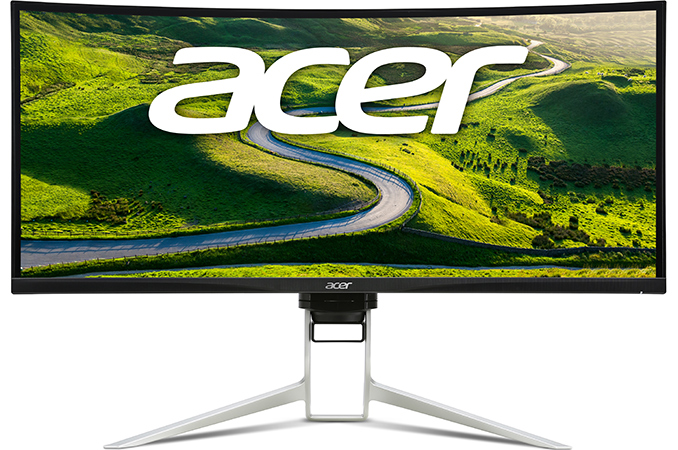


 Quote
Quote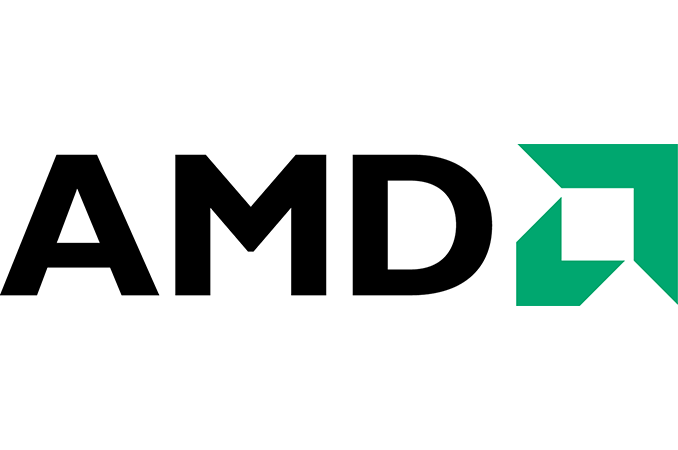
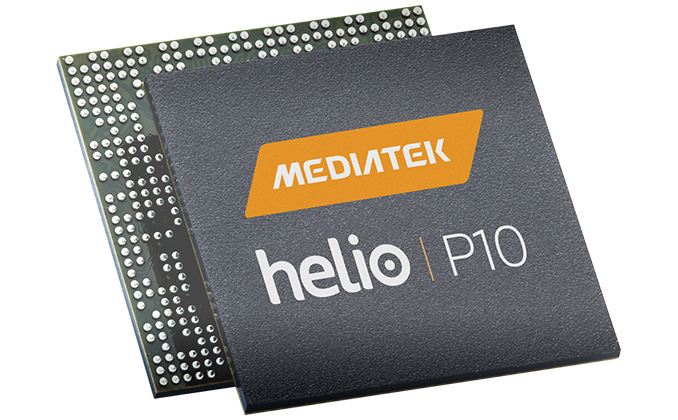

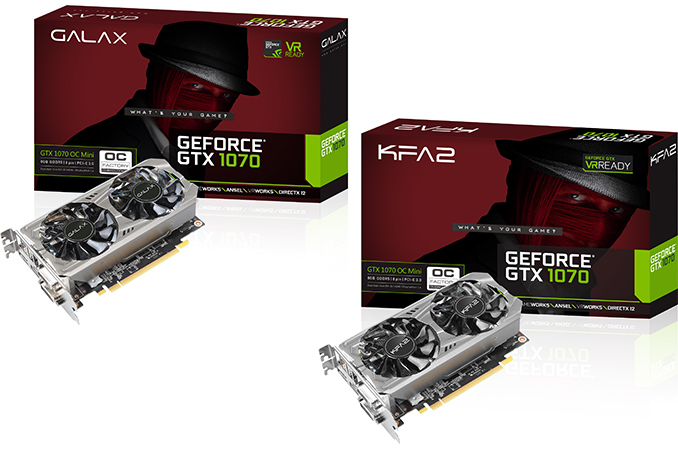
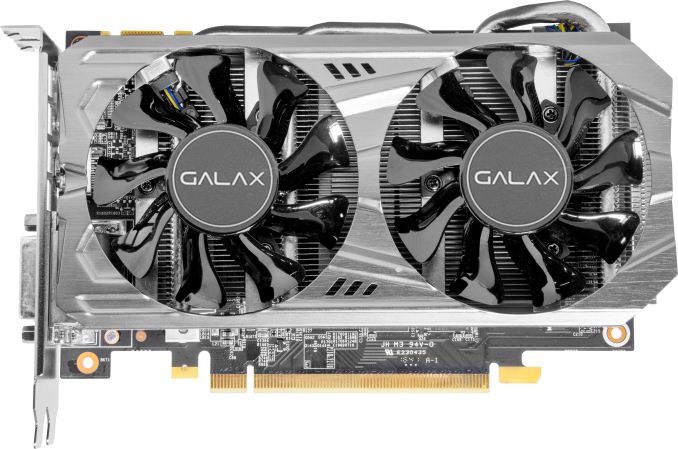

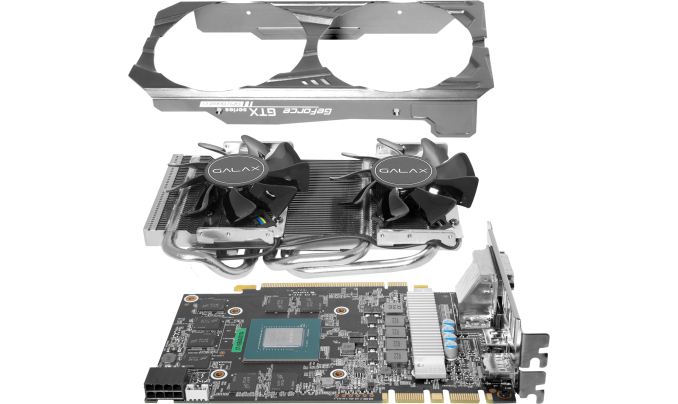
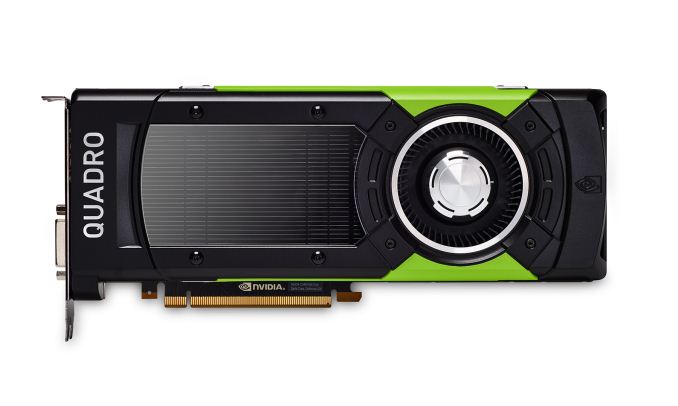
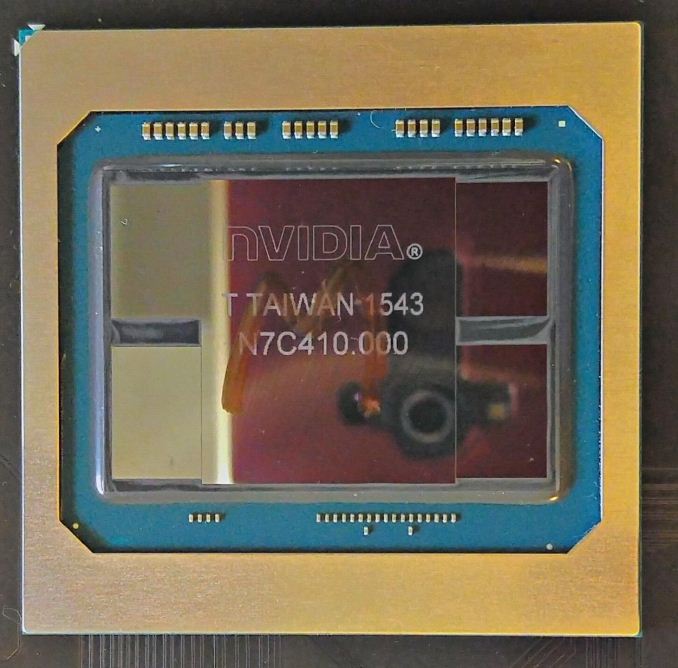
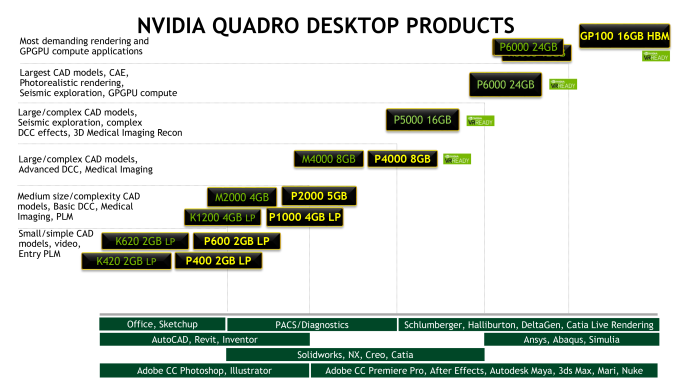
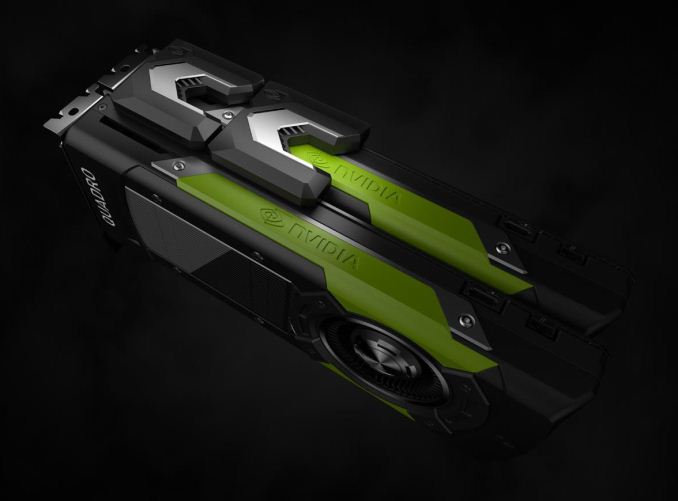





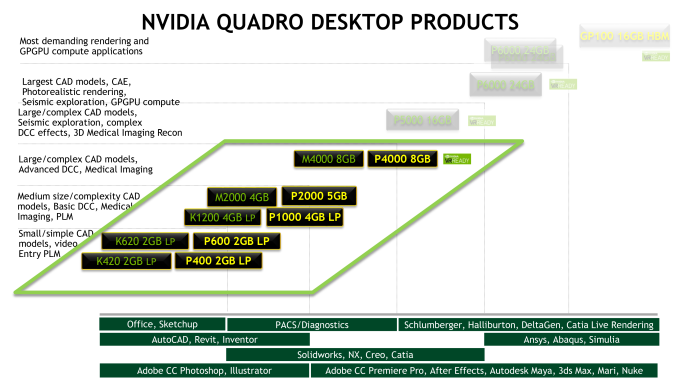
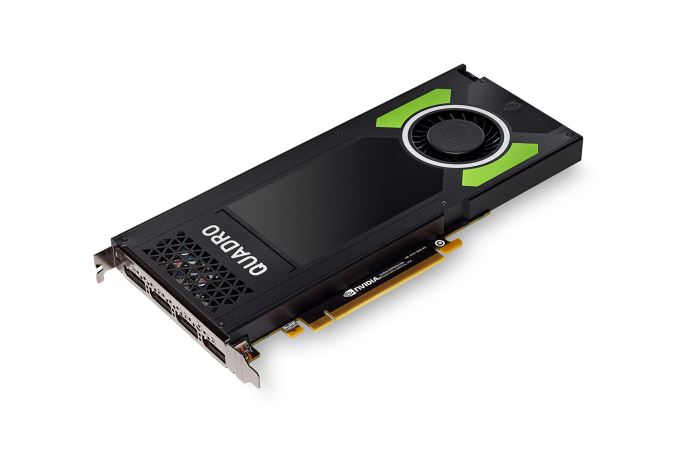
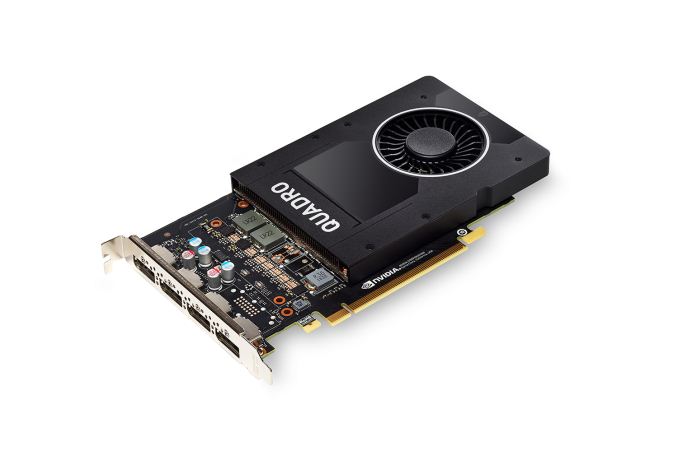
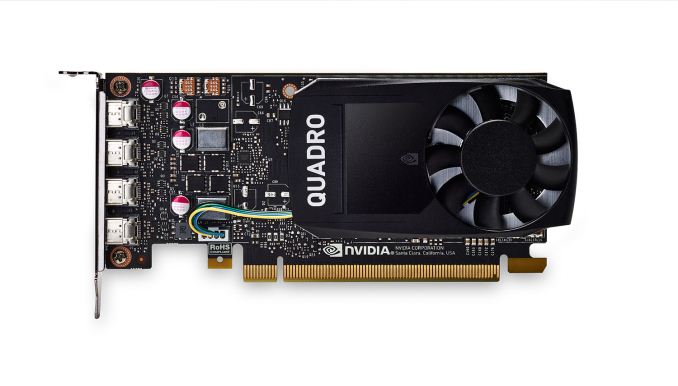
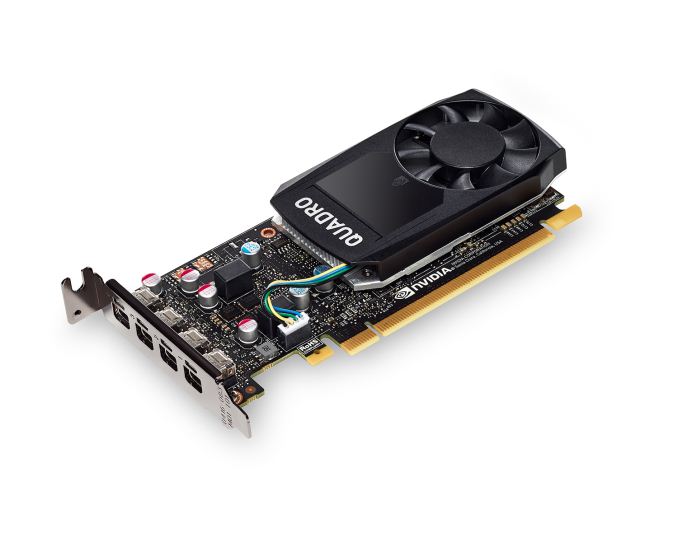

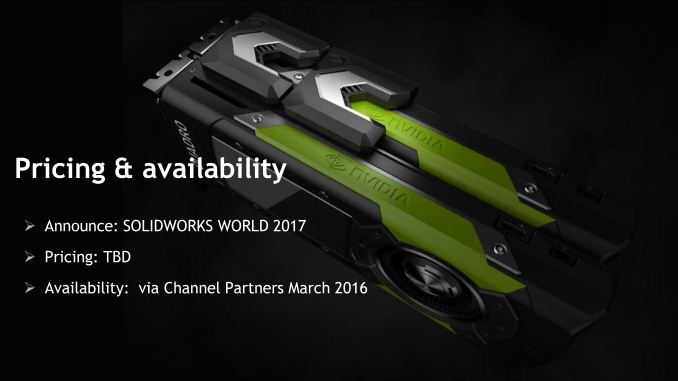
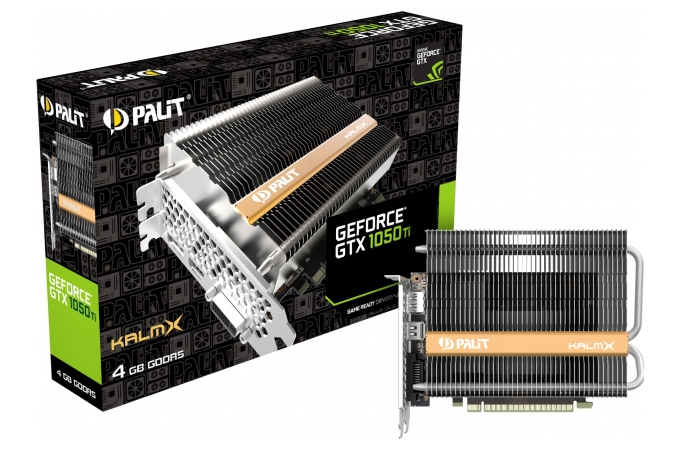
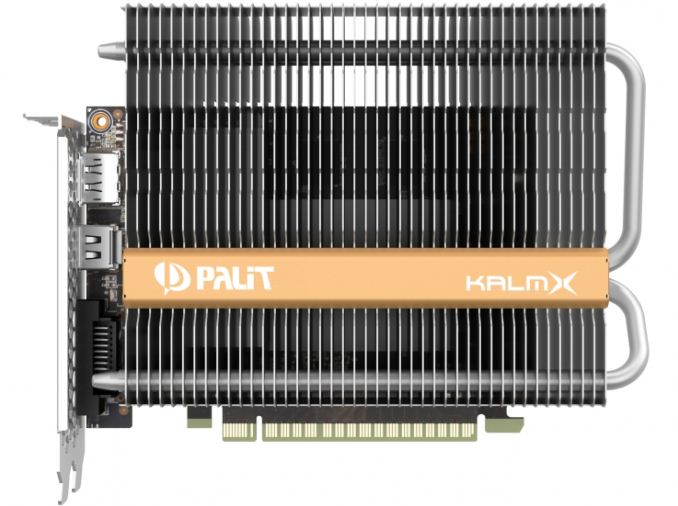
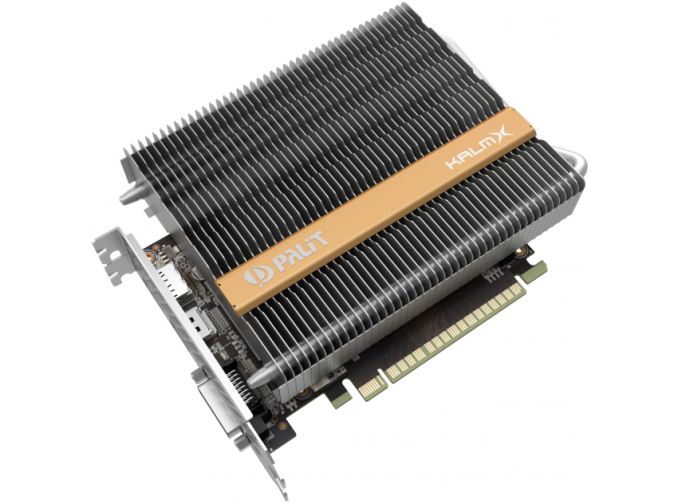
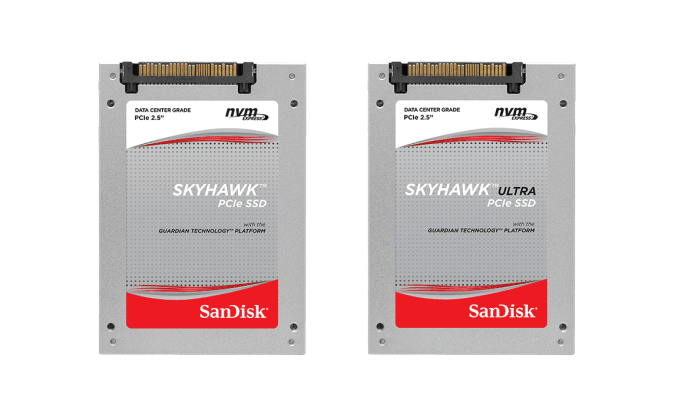
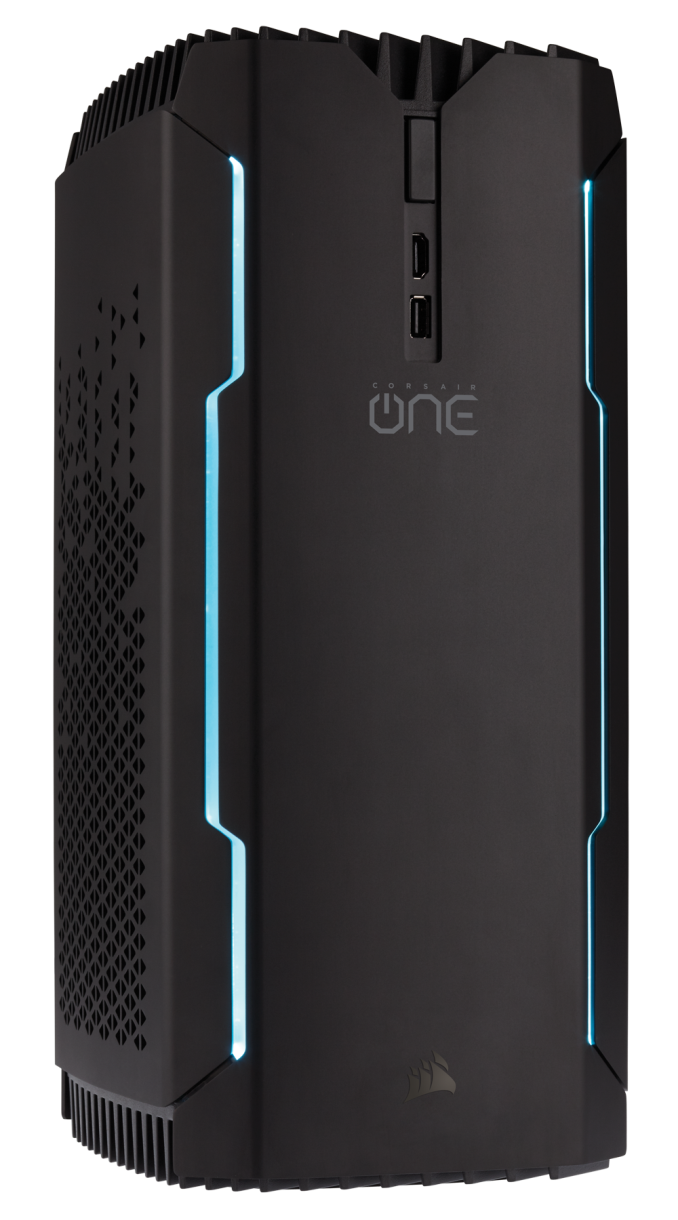
















Bookmarks